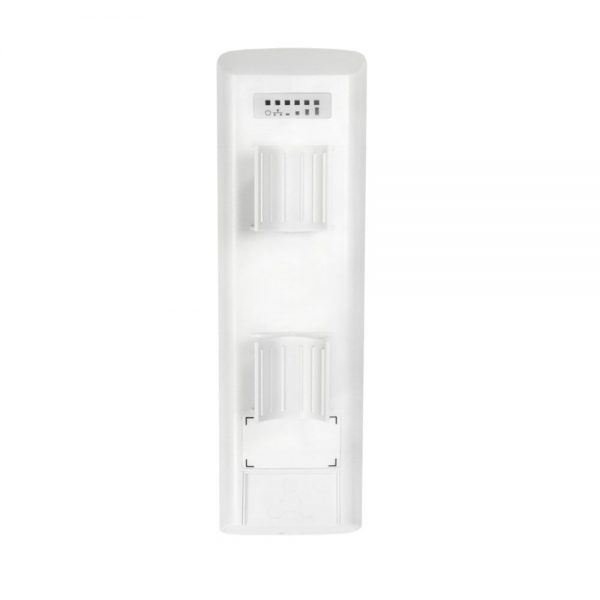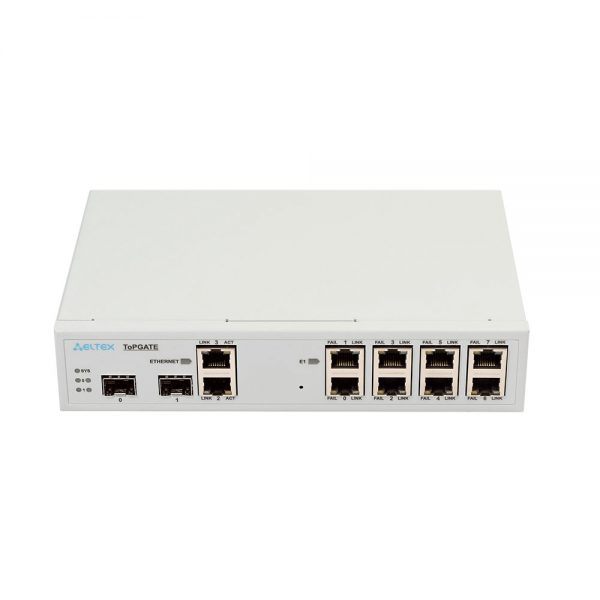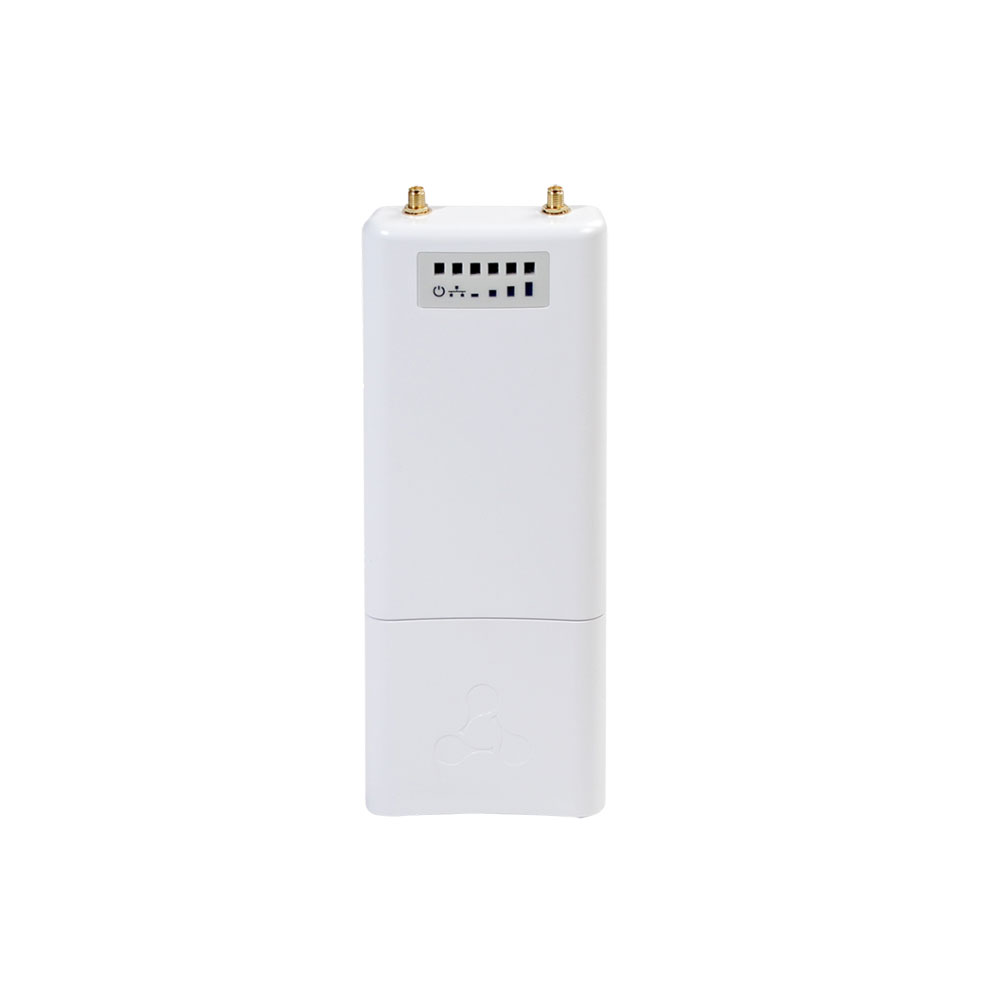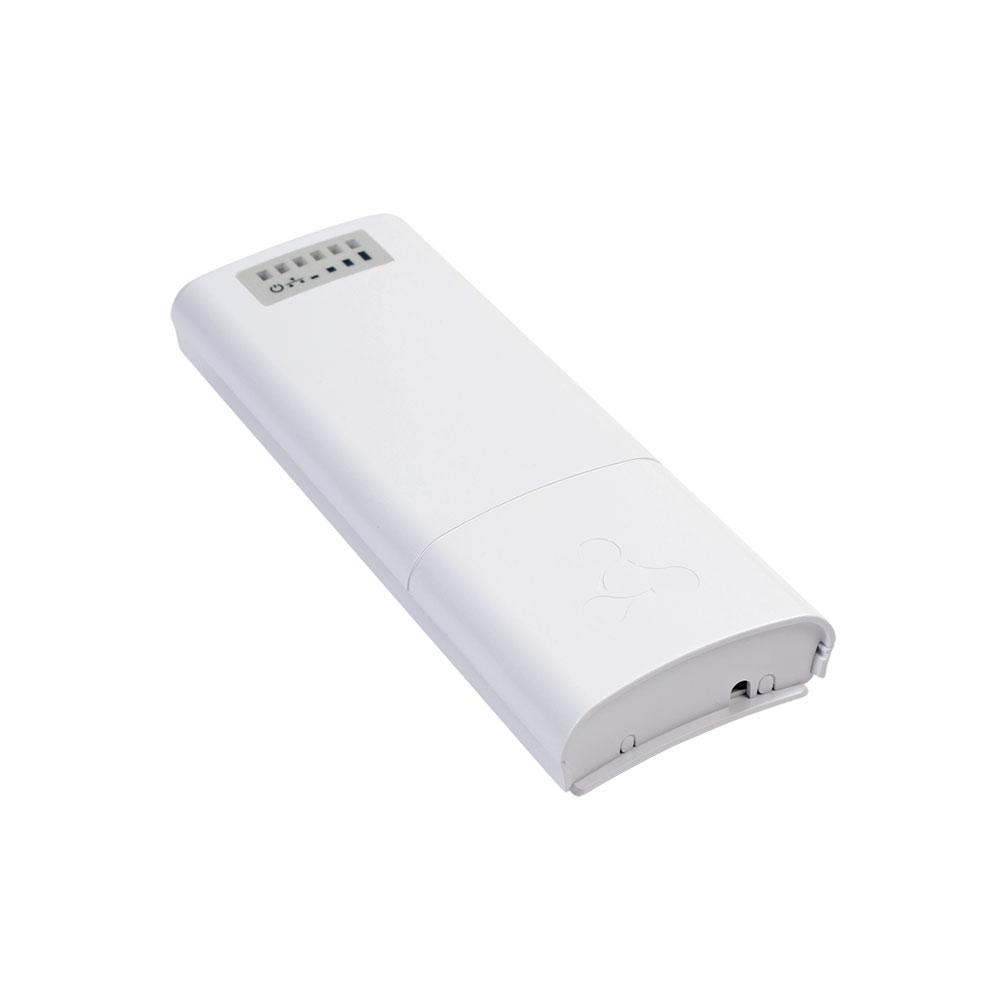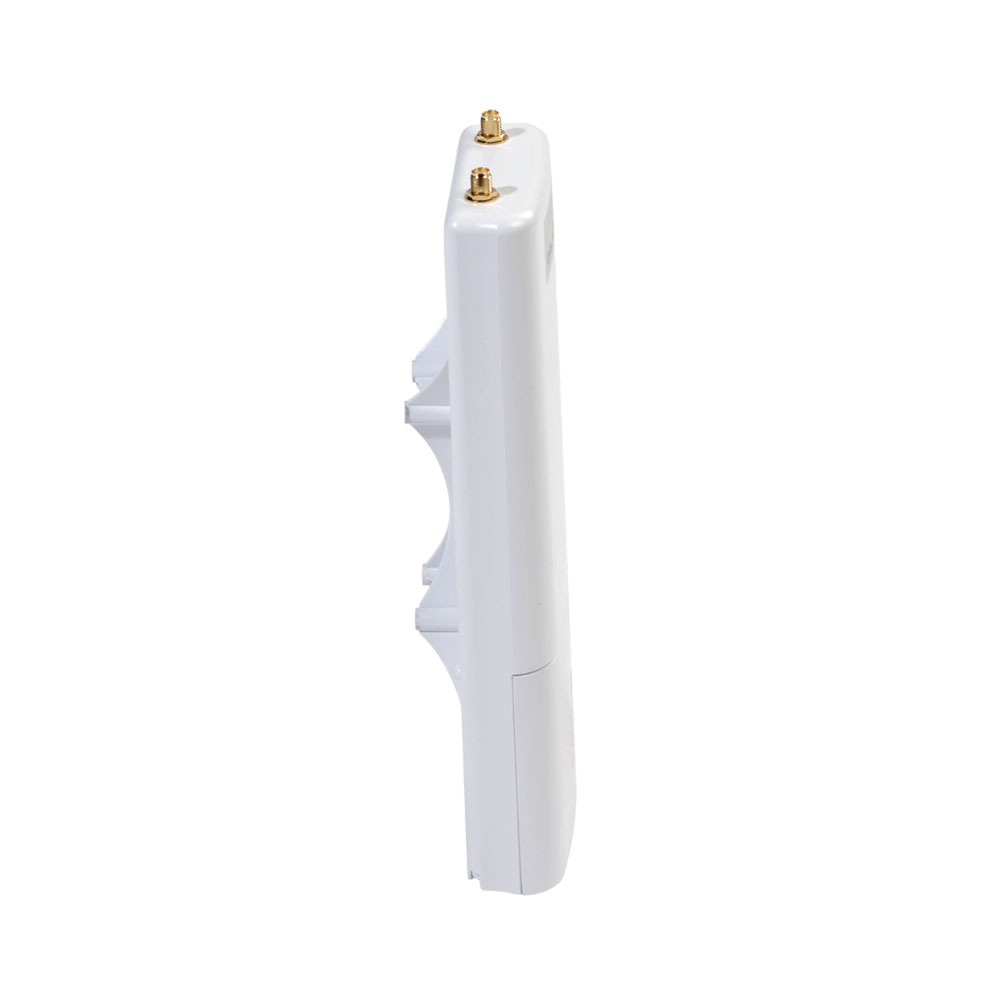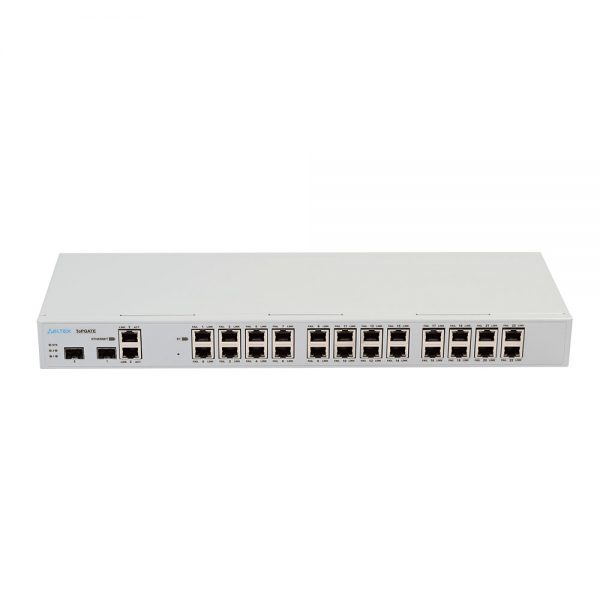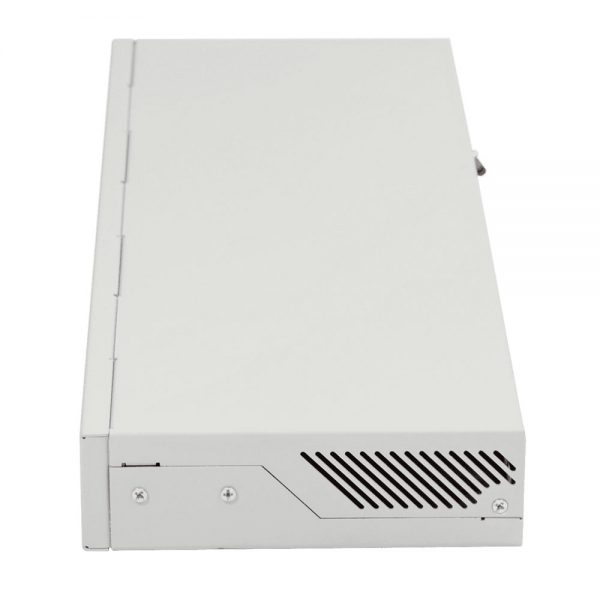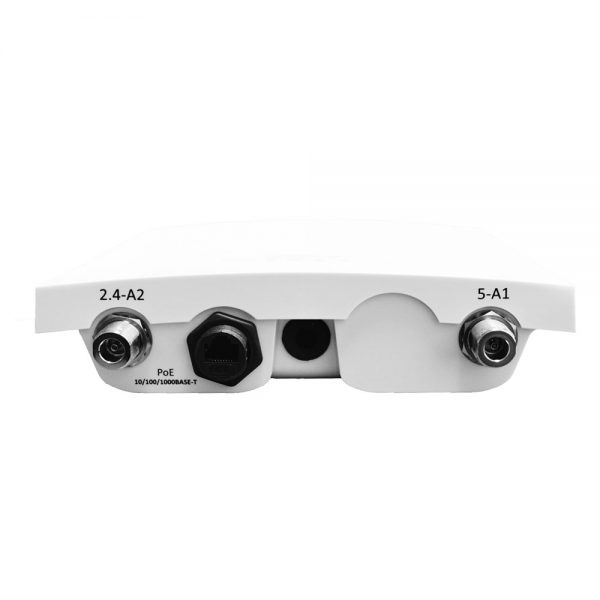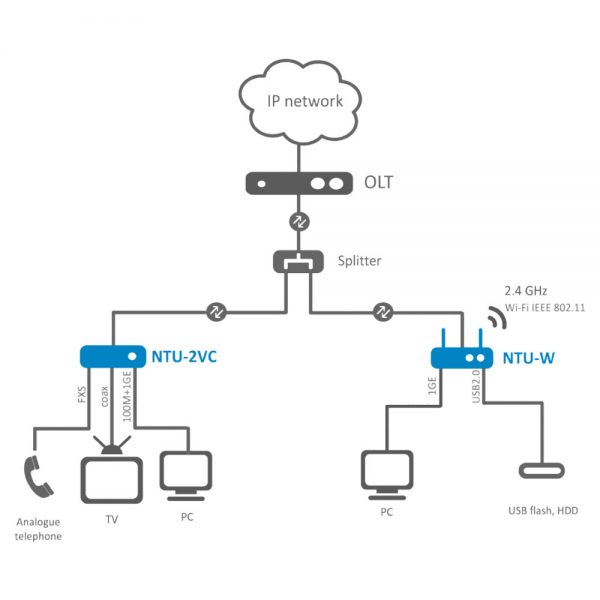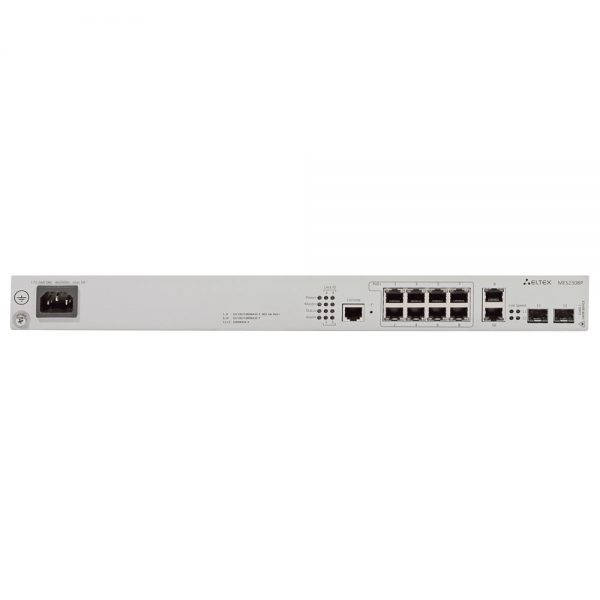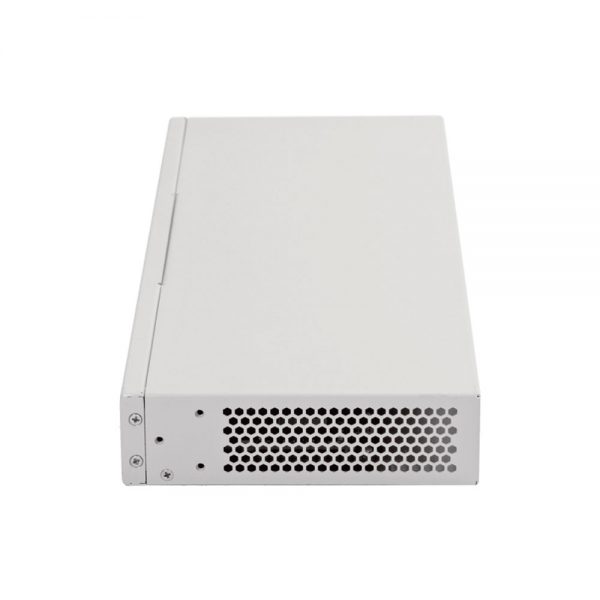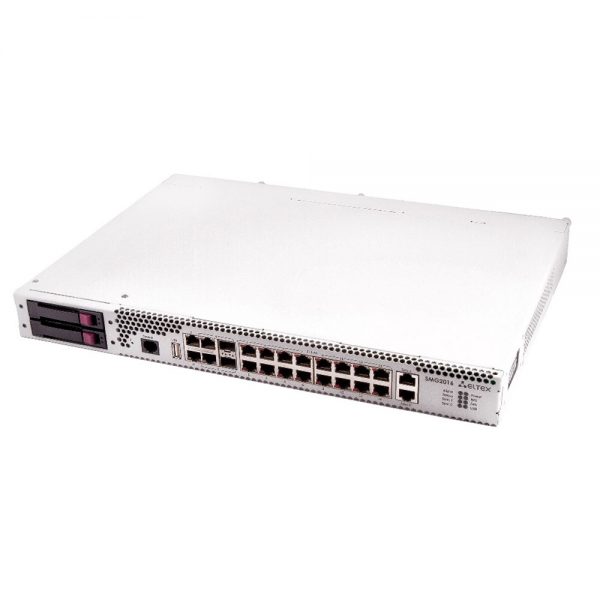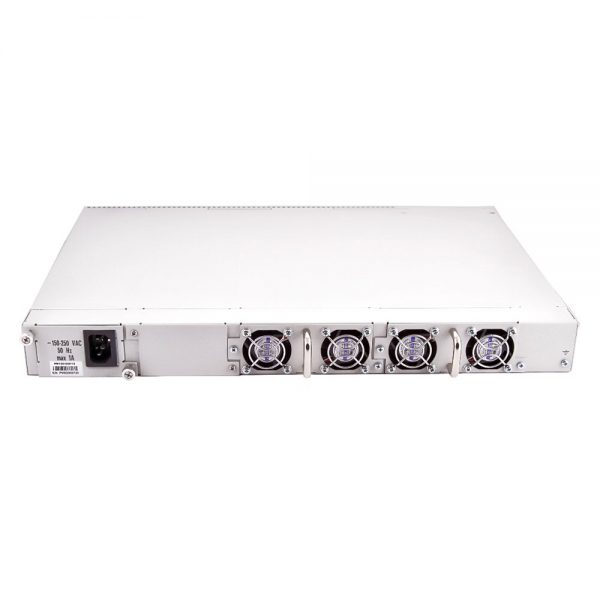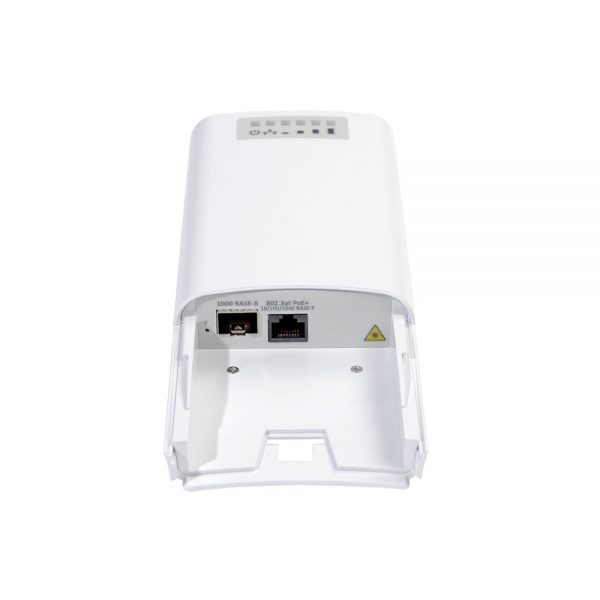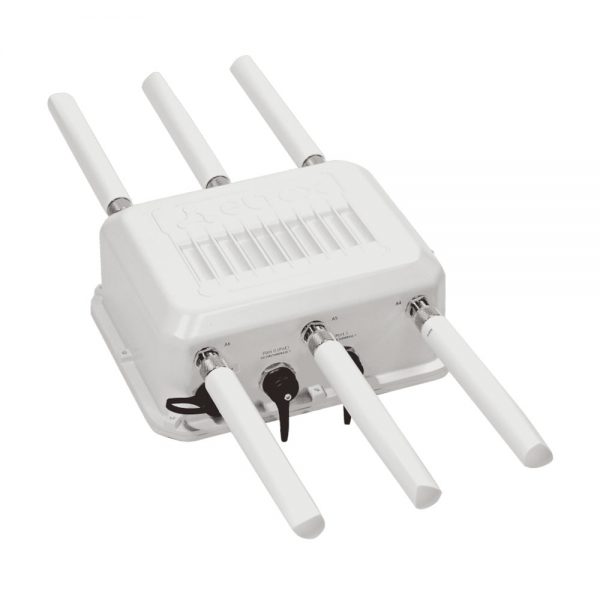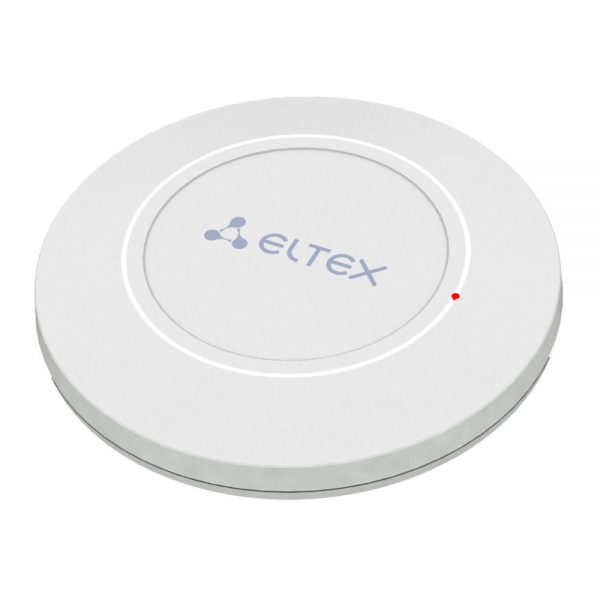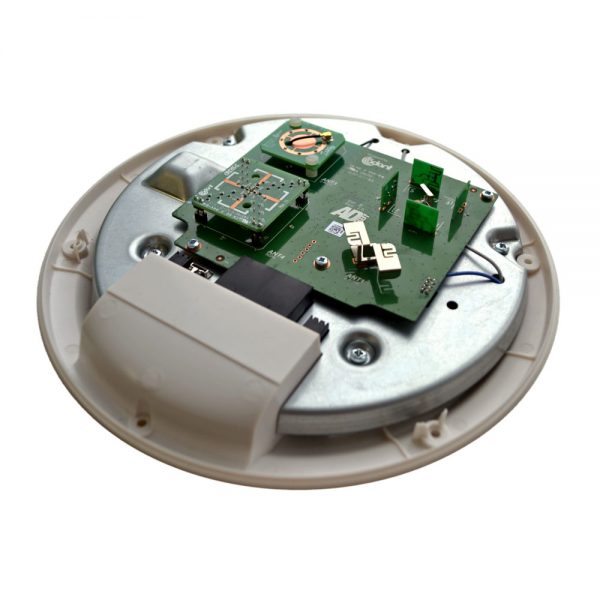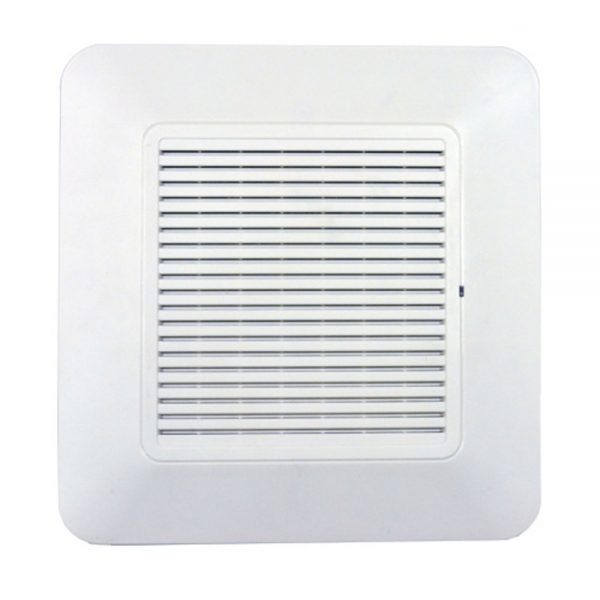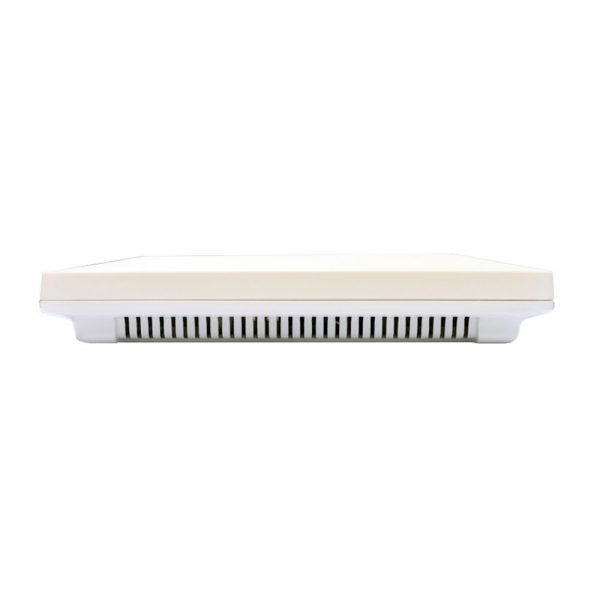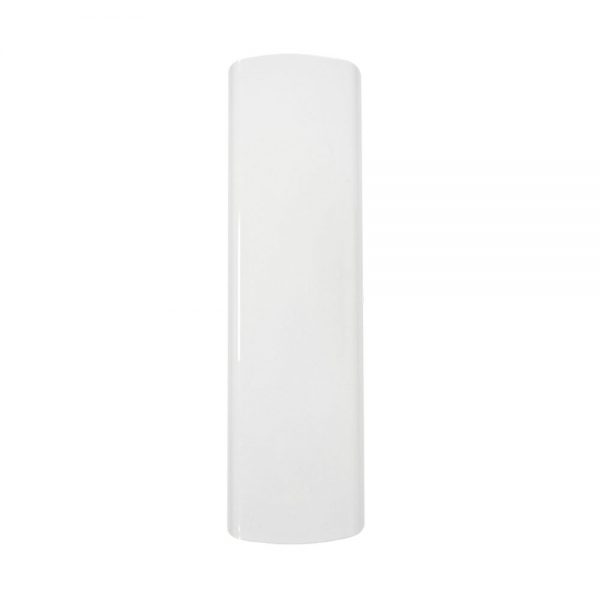Interfaces
- 1 Combo-port 10/100/1000Base-T (Ethernet) / 100/1000Base-X (SFP)
- 2 SMA-type connectors (female) for external antennas (Omni, sector, rod, etc.)
WLAN capabilities
- Support for IEEE 802.11b/g/n
- Data aggregation, including A-MPDU (Tx/Rx) and А-MSDU (Rx)
- Priorities and packed planning based on WMM
- Hidden SSID support
- 4 virtual access points
- External access points detection
- APSD
- Spectrum analyzer
- Support for wireless bridges (WDS)
- Polling
- Support for central fixed frequency
Network function
- Automatic negotiation of speed and duplex mode, switching over MDI and MDI-X modes
- Support for VLAN (Access, Trunk, General)
- 802.1X authentication support
- DHCP-client
- Support for ACL
- Support for NTP
- Support for Syslog
QoS functions
- Bandwidth limiting for each SSID
- Client data rate limiting for each SSID
- Changing WMM parameters for each radio interface
- Support for prioritization by CoS and DSCP
Security
- Centralized authentication via RADIUS server (WPA/WPA2 Enterprise)
- WPA/WPA2 encryption
- 64/128/152-bit WEP encryption of data
Wireless intarface parameters
- Frequency range 2402–2482 MHZ
- DSSS, CCK, BPSK, QPSK, 16QAM, 64QAM modulation
- Support for MIMO 2х2
- Wi-Fi Realtek RTL8197FS chip
- Bandwidth: 5, 10, 20, 40 MHZ
Operating channels1
- 802.11b/g/n: 1–13 (2402–2482 MHz)
Data rate2
- 802.11b: up to 11 Mbps
- 802.11g: up to 54 Mbps
- 802.11n: up to 300 Mbps
Receiver sensitivity
- 2.4 GHz: up to -98 dBm
Maximum power of the transmitter1
- 2.4 GHz: 26 dBm
Configuration
- Remote control via Telnet, SSH
- Web interface
- CLI
- NETCONF
- SNMP (Monitoring)
Physical specifications
- Power consumption up to 13 W
- Realtek RTL8197FS 1 GHz processor
- 32 MB Flash
- 128 MB RAM
- Power supply:
- PoE+ 48В/54В (IEEE 802.3at-2009)
- Operating temperature from -45°С to +65°С
- IP54 protection level
- Dimensions (WxHxD): 88×232.5×47 mm
- Pole mount
1The number of channels and the value of the maximum output power will vary according to the rules of radio frequency regulation in your country.
2The maximum wireless data rate is defined according to IEEE 802.11b/g/n standard. The real bandwidth might be different. Conditions of the network,
environment, the amount of traffic, building materials and constructions and network service data might decrease the real bandwidth. The environment
might influence on the network coverage range

